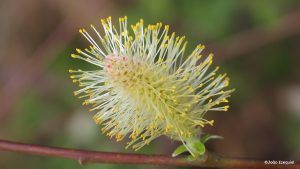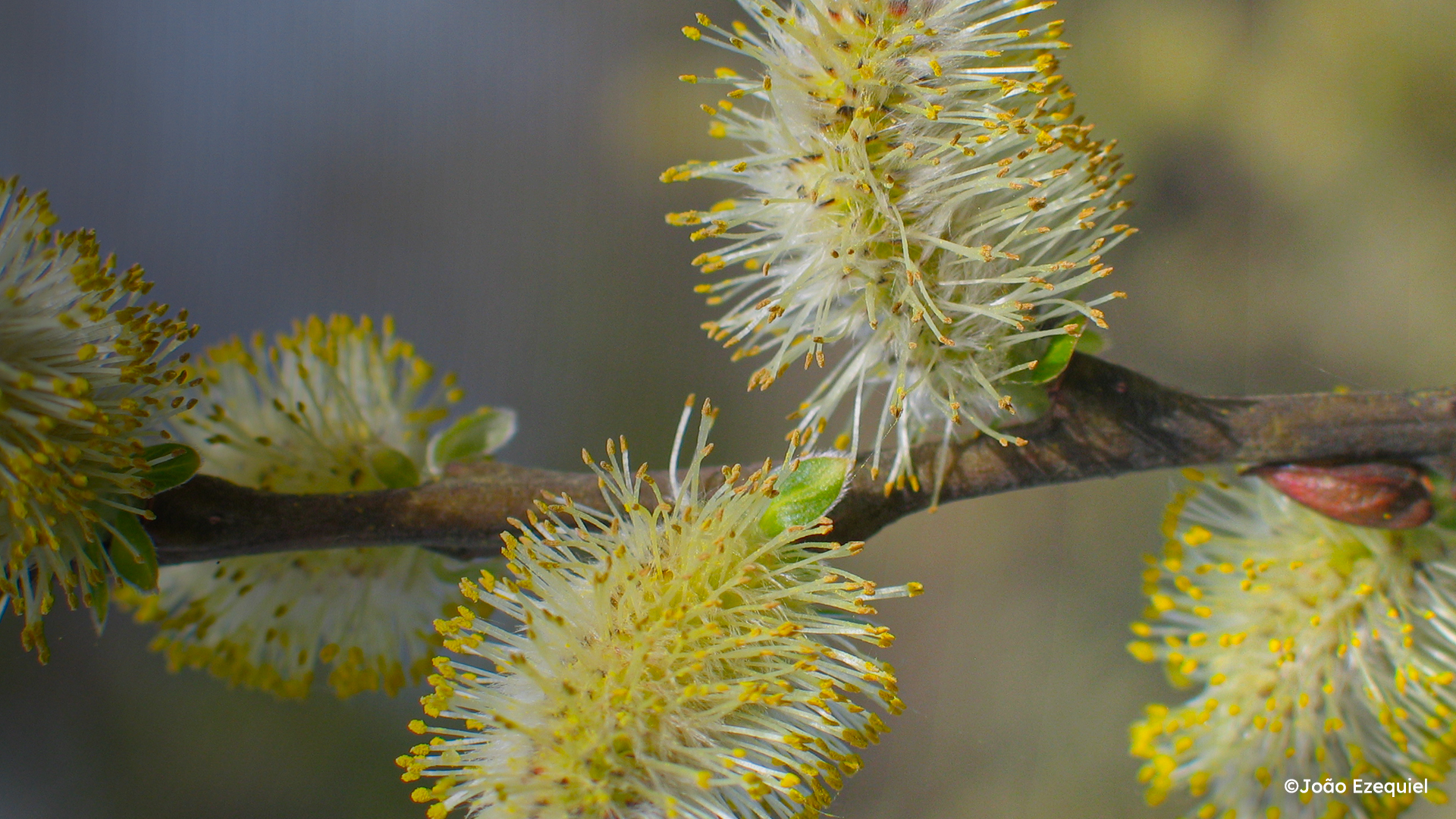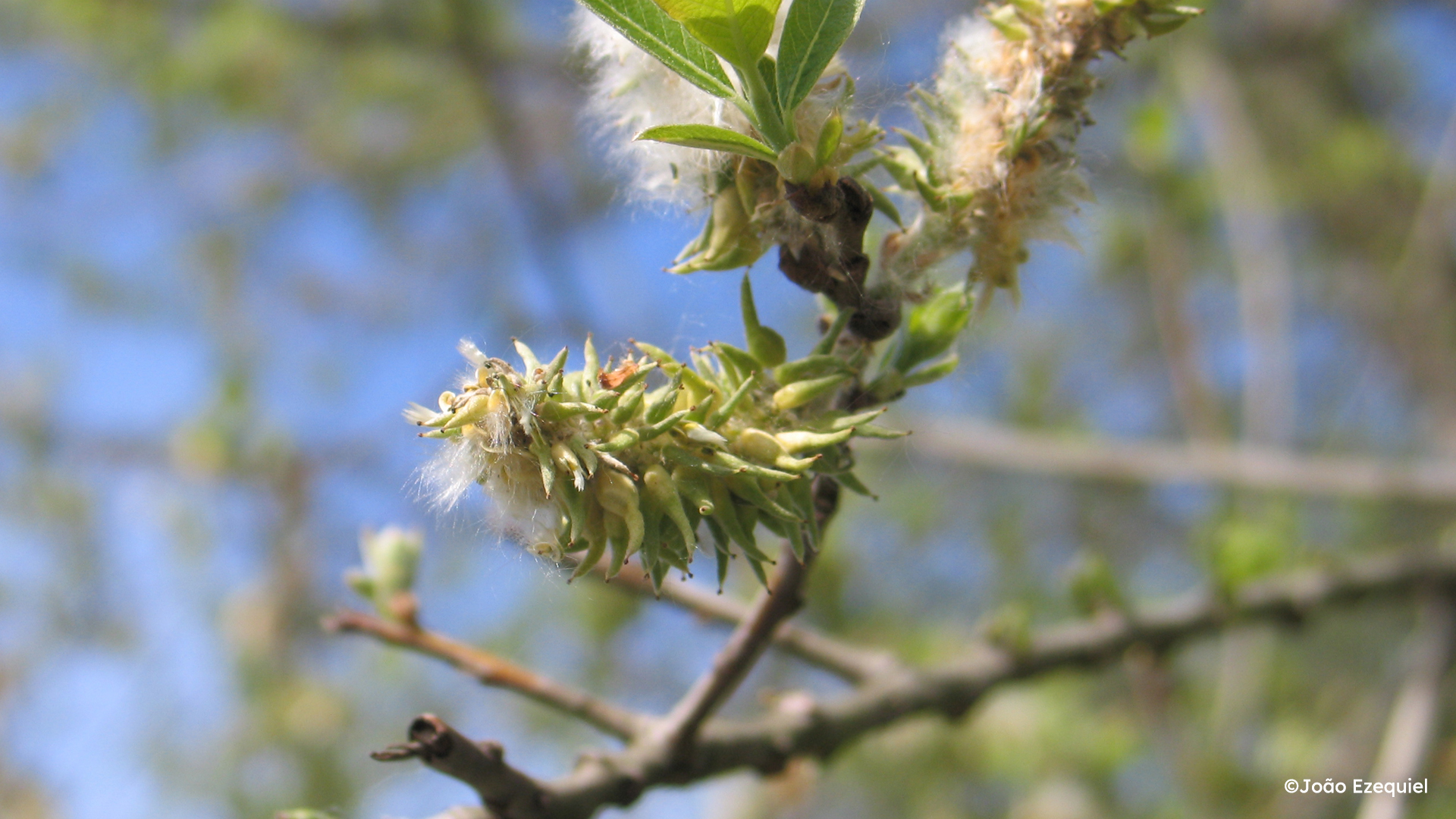On the banks of Portugal’s rivers and streams stands an elegant and mysterious figure – the grey willow (Salix atrocinerea). This tree, also known as grey sallow, stands out for its striking presence, in which the dark trunk contrasts with its two-tone branches and leaves, thus creating an unusual atmosphere. Meet this remarkable species.
The grey willow is a shrub or small tree native to Atlantic Europe and the Mediterranean region, adapted to moist soils and which can be found at the edge of watercourses. Its presence along the banks of Portuguese rivers helps the landscape and provides a vital habitat for several life forms.
The grey willow (Salix atrocinerea) is a deciduous tree and rarely exceeds twelve meters in height. Its treetop is not very dense and the bark of the trunk, which is grey and smooth in the beginning, takes on over time a brownish hue, sometimes very black. The leaves, elongated in shape, and largely lanceolate, resemble the tip of a spear, with wider ends. And whereas the upper part of the leaf, facing the light, displays a dark-green colour, the lower part is whitish due to the presence of reddish long white hairs.
The grey willow’s magic is clearly there during flowering. It stands out for its early flowering, between January and March. This natural show turns the seemingly simple branches of the tree, which at this point are leafless, into authentic works of art, covered by small flowers of greenish, white or yellowish tones, which contrast with the dark trunk. It is a dioecious flowering species (that is, male plants have only male flowers and female plants have only female flowers), arranged in vertical, cluster-like bunches.

But the apparent simplicity of these flowers hides an intrinsic complexity: by attracting pollinators such as bees and butterflies, which benefit from the nectar of these flowers, a symbiosis between the grey willow and these pollinators is created, thus assisting biodiversity. The fruit of the less showy grey willow is a hairy capsule, also covered with hair opening up in two halves (called valves), which matures between April and May. These seeds are dispersed by wind or water, in small flakes that resemble cotton, in a process very similar to that of poplars, also from the salicaceae family.
Despite its modest size, this tree is surprisingly versatile as regards its applications. It tolerates land submerged by winter floods and is used in the stabilization of lands and the fight against erosion, due to both its long and deep root system, which makes it a frequent choice. It plays also a crucial role in natural engineering, assisting the recovery and stabilization of river banks and acting as an effective barrier against the wind.
Its use in the process of treating polluted water is currently being studied, testing its effectiveness in turning harmful substances into organic matter, thus granting it a promising role in environmental de-pollution.
In addition to its ecological relevance, the grey willow is also acknowledged for containing salicin, a substance extracted from the bark, from which we obtain salicylic acid, which is the base of acetylsalicylic acid, an essential compound of Aspirin, used in the treatment of fever, headaches, among other conditions. Its properties were already recognized by the Egyptians and Sumerians, but it was only marketed as medicine in 1899 by Bayer and became famous worldwide after that.




